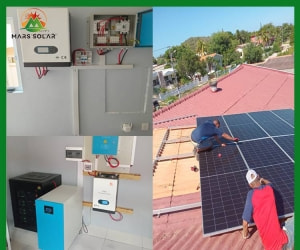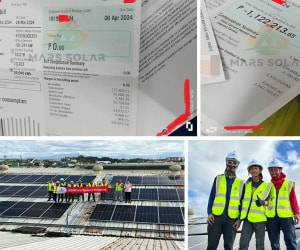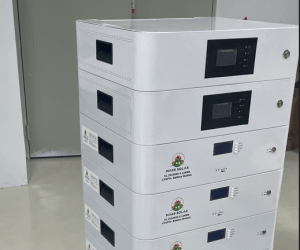Renewable energy meets 50% of global electricity demand growth in 2021
According to the latest electricity report issued by the International Energy Agency (IEA), global electricity demand will rebound strongly in 2021 and 2022. After falling by about 1% in 2020, global electricity demand is expected to increase by nearly 5% and 4% in 2021 and 2022, respectively. Most of this growth will occur in the Asia-Pacific region. More than half of the global growth in 2022 will occur in China, the world's largest Residential Solar System electricity consumer. India is the third largest consumer and will account for 9% of global growth.
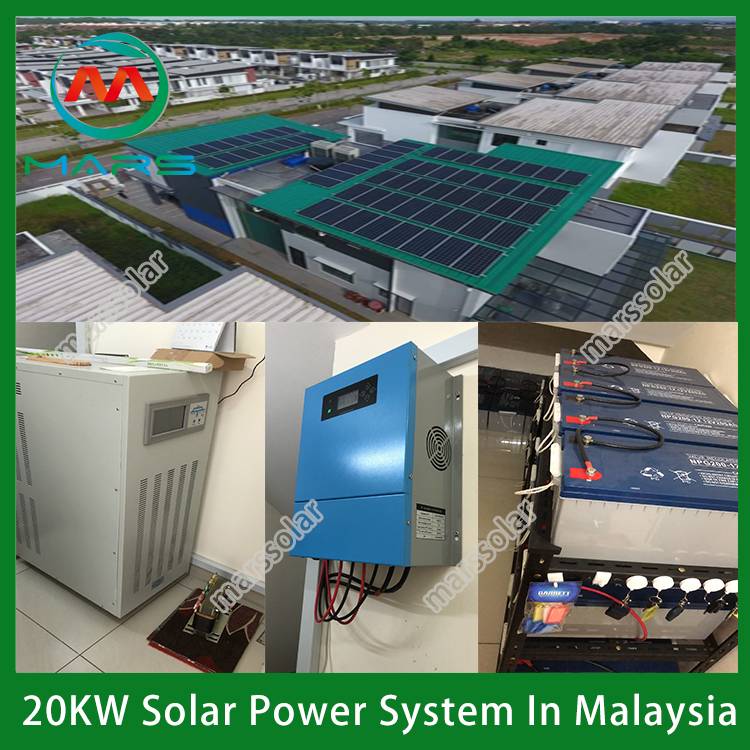
From 2021 to 2022, renewable energy power generation will continue to grow strongly, but it will not be able to keep up with the ever-increasing demand. After a 7% increase in renewable energy power generation in 2020, it is expected to increase by 8% and more than 6% in 2021 and 2022, respectively. Despite the rapid growth, renewable energy is expected to only meet about half of the growth in electricity demand in 2021 and 2022. Nuclear power generation will increase by approximately 1% and 2% in 2021 and 2022, respectively.
Fossil fuel power generation will meet 45% and 40% of the additional demand in 2021 and 2022, respectively. After a 4.6% drop in coal-fired power generation in 2020, it will increase by nearly 5% by 2021 to exceed pre-pandemic levels. By 2022, it will grow by a further 3% and may hit a record high. After a 2% drop in gas-fired power generation in 2020, it is expected to increase by 1% in 2021 and close to 2% in 2022. Natural gas growth lags behind coal because it plays a smaller role in the fast-growing Asia-Pacific region, and it also faces increasing competition from renewable energy sources from the United States and Europe.
Carbon dioxide emissions from the power sector will increase in 2021 and 2022. After falling by 1% and 3.5% in 2019 and 2020, respectively, the power sector’s carbon dioxide emissions are expected to increase by 3.5% and 2.5% in 2021 and 2022, respectively, which will bring them to the highest levels in history. The decline in global power generation emission intensity will slow from more than 3% in 2020 to about 1% in 2021 and 2022.
IEA believes that stronger policy actions are needed to achieve climate goals. In the IEA to 2050 Net Zero Emissions scenario, nearly three-quarters of the emissions reductions between 2020 and 2025 will be in the power sector, where emissions will drop by an average of 4.4% per year. To achieve this decline, coal-fired power generation needs to be reduced by more than 6% per year, partly replaced by natural gas, which is growing at a rate of about 5% per year.
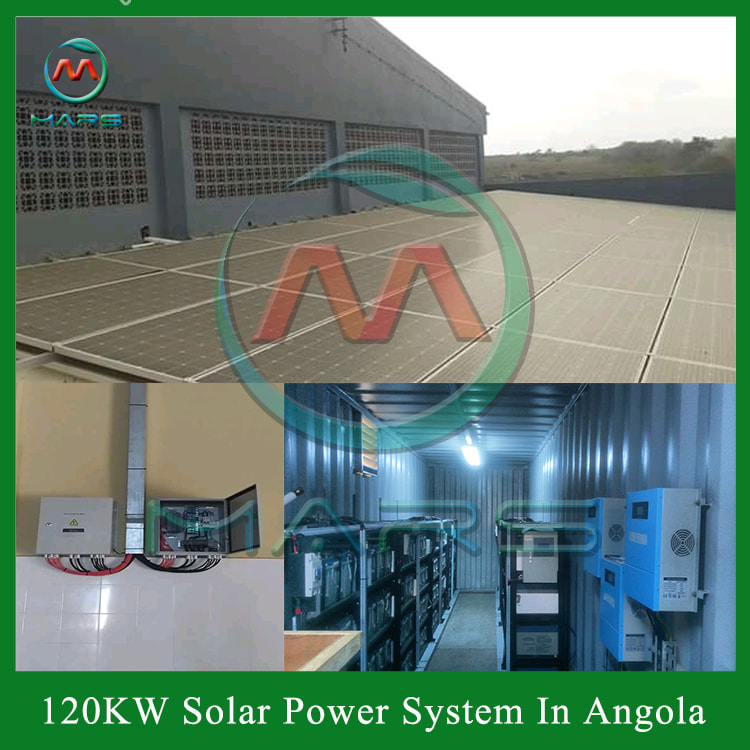
Wholesale electricity prices have rebounded. The International Energy Agency wholesale electricity market price index, which tracks price trends in major advanced economies, shows that prices in the first half of 2021 have increased by 54% over the same period in 2020. This is a 25% drop in average prices for the entire year of 2020. The reason for these large fluctuations is that the Covid-19 crisis in 2020 has caused dramatic fluctuations in fossil fuel prices and related changes in electricity demand.
The recent extreme weather events threatened the security of supply. In the first half of 2021, affected by extreme cold, heat and drought, supply shortages occurred in many areas. In order to classify power outages, IEA introduced a new power safety incident scale that rates the severity of incidents based on the proportion of affected customers and the duration of the supply interruption. For example, the Texas Power Crisis in February, during which customers were out of power for four days, was rated the highest in this category.
The higher share of variable renewable energy has a measurable impact on the operation and design of power systems. Analysis of selected markets shows that hourly demand changes that must be matched to flexible power generation and consumption are increasing. In addition, the gap between the maximum and minimum flexible power generation levels required every day is widening. This makes the power system more flexible to supplement the generation of variable renewable energy sources such as wind and solar photovoltaics, becoming more and more important.
-
 Solar PV System Expansion: Compatibility, Efficiency & Implementation Guide1. Background and Necessity Early-installed PV systems generally fail to meet the growing energy demands of modern households and enterprises. Compared with replacing the entire system, expansion is a more economical option—but the core question
Solar PV System Expansion: Compatibility, Efficiency & Implementation Guide1. Background and Necessity Early-installed PV systems generally fail to meet the growing energy demands of modern households and enterprises. Compared with replacing the entire system, expansion is a more economical option—but the core questionDo you like ?0
Read more -
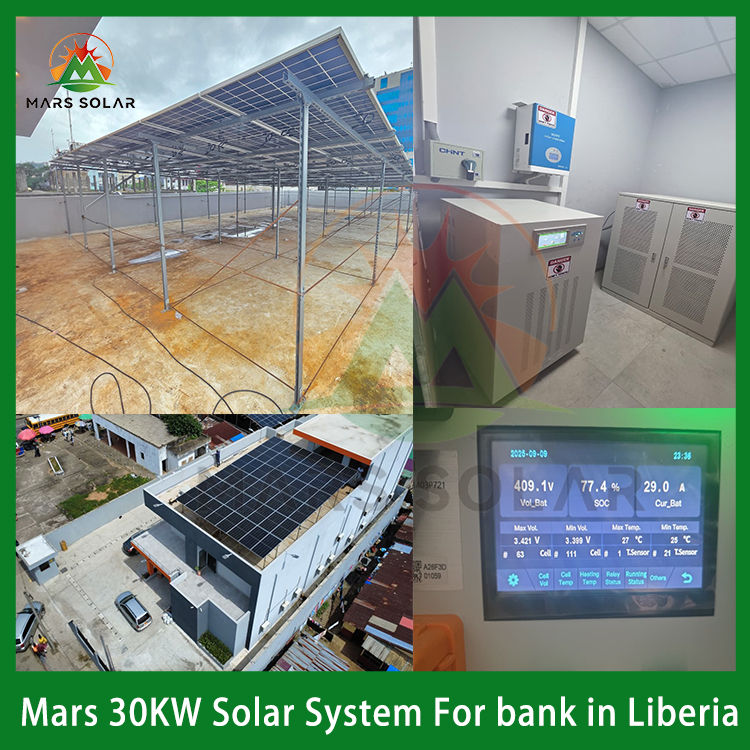 Customized Off-Grid Solar System for a Liberian Bank: Achieving Power IndependenWhen Banks Face the Challenge of "Grid Power Outages and Voltage Fluctuations": A Real-World Solution from Liberia In scenarios where the power grid is unstable and manual intervention is difficult, how to ensure the 24/7 stable operation
Customized Off-Grid Solar System for a Liberian Bank: Achieving Power IndependenWhen Banks Face the Challenge of "Grid Power Outages and Voltage Fluctuations": A Real-World Solution from Liberia In scenarios where the power grid is unstable and manual intervention is difficult, how to ensure the 24/7 stable operationDo you like ?0
Read more -
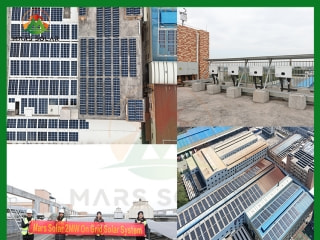 2MW Solar Panel System For Factory2MW mars solar grid-tied solar panel system for factory have designed, produced, and installed in a factory.How does Mars Solar build such a solar panel system for factory? 1. Data collection Before designing the plan, the factory owner vi
2MW Solar Panel System For Factory2MW mars solar grid-tied solar panel system for factory have designed, produced, and installed in a factory.How does Mars Solar build such a solar panel system for factory? 1. Data collection Before designing the plan, the factory owner viDo you like ?0
Read more -
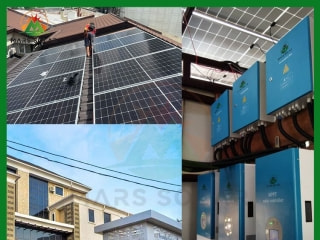 100KW Solar For Hotels And Resorts In NigeriaIn December 2024, the Mars Solar 100KW Nigeria solar for hotels and resorts project was successfully completed. In May 2024, the customer contacted Mars solar and had a series of communications on the solar for hotels and resorts project. The d
100KW Solar For Hotels And Resorts In NigeriaIn December 2024, the Mars Solar 100KW Nigeria solar for hotels and resorts project was successfully completed. In May 2024, the customer contacted Mars solar and had a series of communications on the solar for hotels and resorts project. The dDo you like ?0
Read more -
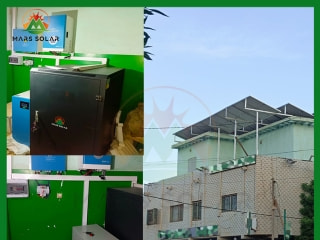 Reliable Energy Solutions for a Mali Pharmacy: 15KW Solar System Success StoryIn the heart of Mali, reliable electricity is a significant challenge, with power coming on for just 2 hours and then cutting off for 4 hours multiple times a day. This erratic power supply is particularly problematic for businesses that depend on consist
Reliable Energy Solutions for a Mali Pharmacy: 15KW Solar System Success StoryIn the heart of Mali, reliable electricity is a significant challenge, with power coming on for just 2 hours and then cutting off for 4 hours multiple times a day. This erratic power supply is particularly problematic for businesses that depend on consistDo you like ?0
Read more -
 Harnessing the Sun: A Sustainable Solution for Abou's Family in MaliIn the heart of Mali, families like Abou's face daily challenges with electricity access, enduring power outages that can last up to 12 hours. To combat this, Abou relies heavily on a diesel generator to power his home, which includes essential applia
Harnessing the Sun: A Sustainable Solution for Abou's Family in MaliIn the heart of Mali, families like Abou's face daily challenges with electricity access, enduring power outages that can last up to 12 hours. To combat this, Abou relies heavily on a diesel generator to power his home, which includes essential appliaDo you like ?0
Read more

